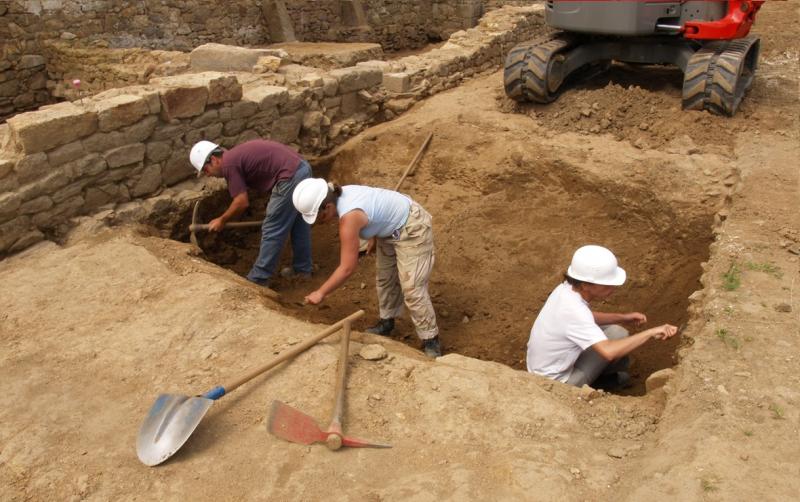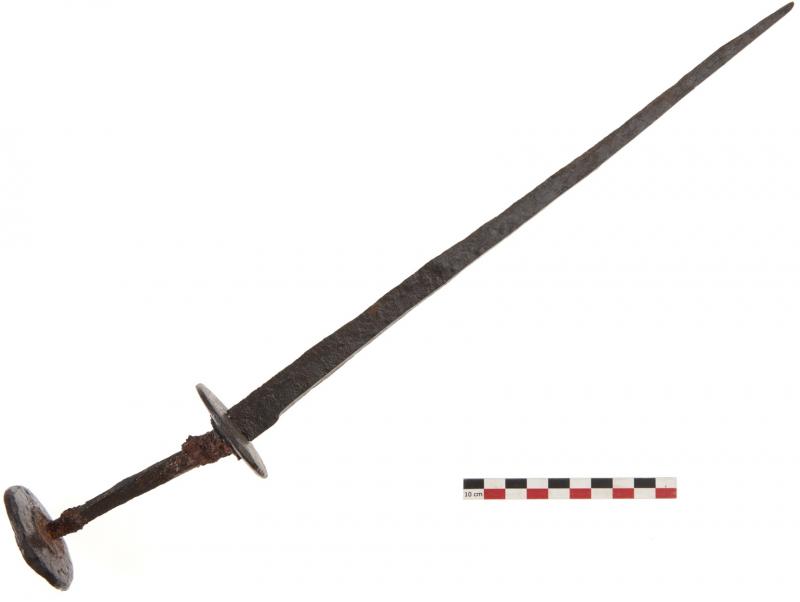
Chronologie
- In 1951, the ruins of the castle were protected by registration in the inventory of Historic Monuments.
- In 1981, the Côtes d’Armor Department bought the estate.
- From 1983, the first internal clearing projects were undertaken by an association.
- In 1994, archaeological surveys were commissioned by the Regional Directorate of Cultural Affairs (DRAC) and the Department to determine the potential of the site.
- In 1995, a planned archaeological excavation began, carried out by the National Institute for Preventive Archaeological Research (Inrap).
- In total, they took place over 20 years and ended in 2013.

The research
The archaeologist's work consists of tracing the evolution of the site, the different phases of its history, but also the lifestyles and activities within the castle. The point of conducting on-site research is to fill gaps in the written documentation. For example, the founding of the Château du Guildo has long been considered very late because the first mentions of the building only date from the beginning of the 15th century, but it was discovered on site that its construction took place from the 11th to the 15th century. The Château du Guildo is one of the rare sites from the medieval era to have been the subject of in-depth archaeological excavations. Some information has even made it possible to complete knowledge about the Middle Ages.
Archaeological furniture
The objects found during excavations are called “archaeological furniture”. They provide valuable information on the lifestyles of the inhabitants, depending on the social rank of their owner. They also make it possible to determine the distribution of spaces and the functioning of the castle. Many objects were found at the Château du Guildo:
- Remains of combat weapons, such as a 14th century archer's dagger found in an embankment constituting the floor of a cellar or iron remains of a crossbow (bolt).

- Horse-related objects, such as horseshoes or pieces of harness. Used in war and hunting, horses constitute a true emblem of the elites. In the middle of the 15th century, a large space was dedicated to horses in the Château du Guildo. There is a stable, most certainly reserved for the lords' personal animals, a farrier's forge and accommodation for the farrier. This set is modern and exceptional for its time. No comparable examples dating from this period have been explored elsewhere.
- Most of the objects found are household objects, broken or discarded. Most of them are food-related items. Nearly 100,000 ceramic shards have been inventoried. Their study allows us to better understand the culinary fashions of the time and sometimes even the origin of the products thanks to their packaging (oil from Spain, dairy products from Normandy). Two types of tableware found at the Château du Guildo stand out. The usual tableware which is used to store food and prepare dishes, and the reception tableware intended for the nobles, which is more elaborate and more precious. For example, archaeologists found a fragment of an Italian earthenware plate representing a soldier. They also discovered fun objects, such as bone tops, dice and jaw harps (small musical instruments).

- Certain objects found testify to the nobility of the castle's occupants, such as this pendant or these two jet rings. This fossil resin was used in the Middle Ages for making jewelry. One of them is encrusted with coral, it represents a quadrupedal animal looking back.
- Several hundred foreign coins attest to the importance of commercial exchanges at the castle. Coins from England, Portugal, Flanders, Spain and even a coin minted in Mexico in 1537 were found on the archaeological site. A monetary weight means that there were certainly officers responsible for verifying the value of the coins by weighing. The Château du Guildo is accessible by boat, which has surely amplified these exchanges.
- Objects related to administrative tasks were also found. It is difficult to explain the loss or discarding of certain objects. This is the case of the silver-gilt stylus with a griffin’s head, a very valuable object used to take notes on a wax tablet. A bronze seal matrix was also found. It allows you to create a relief imprint, with wax for example. These objects mark the political and administrative function of the castle, which is a place of justice and tax collection.
